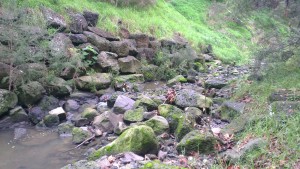Since I left the workforce three weeks ago and returned from our sojourn in Daylesford, I have been taking time each day to sit in a park near my home and watch the birds.
I was inspired to start doing this by my girlfriend, Mel, who has been saying for months that she wants to find a sit spot and start a daily practice. Leaving work has allowed me sink into a different way of being where things like rising early to sit in a park seem like a perfectly sensible way to start the day.
Even in these short weeks I am astounded at how much I have learned just by looking and being aware. I love birds, I am in the habit of paying attention to them, I know the names of most of the common birds in my neighbourhood but there is so much I was missing.
One of my early ‘discoveries’ was a particular bird song that I admired. I initially thought this song belonged to the noisy mynah. I was hearing the call all over the place so I figured it must be a very common bird. I caught a glimpse of a grey bird flying out of the place where I’d heard the sound a moment earlier. I was pretty certain but I kept my eyes open for confirmation.
The next day I had an encounter with a butcher bird, I was pleased to see it because I had thought butcher birds were rare in the suburbs outside large regeneration areas. It sat in a small tree just near my sit spot. As I watched it lifted its beak and song rang out, the same song I had erroneously attributed to the noisy mynah.
This encounter shocked me. Not only did I discover that butcher birds possess a beautiful, melodic call but that far from being rare they are all over the place. There are a pair of butcher birds nesting near my sit spot so I have had the pleasure of observing them almost daily.
It worries me that I have failed to notice their entire species all this time. I suspect it is because there are a handful of birds that are known to me such as rosellas, magpies, magpie larks, mynahs, wattyl birds, ravens, or lorikeets. Viewed from below the butcher bird’s grey breast resembles a mynah, from above its black and white back resembles a magpie lark. I can only assume that I have been seeing what I expected to see rather than noticing the specifics of what is there.
What a wonderful lesson in humility.
In October Mel and I are travelling to northern NSW to learn from nature awareness mentor, Jon Young. One of the workshops is about bird language, understanding the pattern of bird interactions and calls as a gateway into understanding what’s going on in the more-than-human world around us. I can’t wait to learn some frameworks to deepen my understanding of what my local birds are saying to each other.
We are running a crowdfunding campaign to help us get up there and share what we learn afterwards, we’d love to have you join us – http://startsomegood.com/urbannatureawareness






